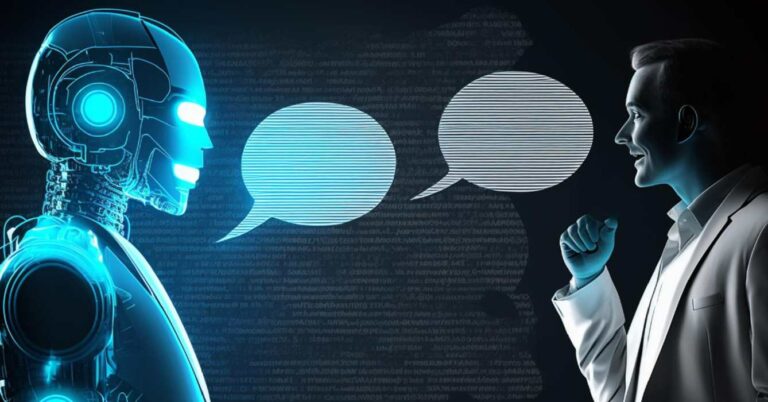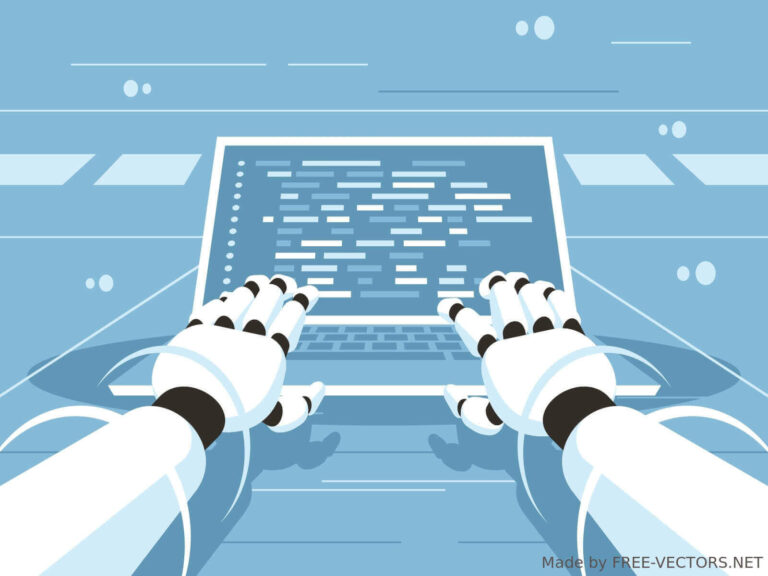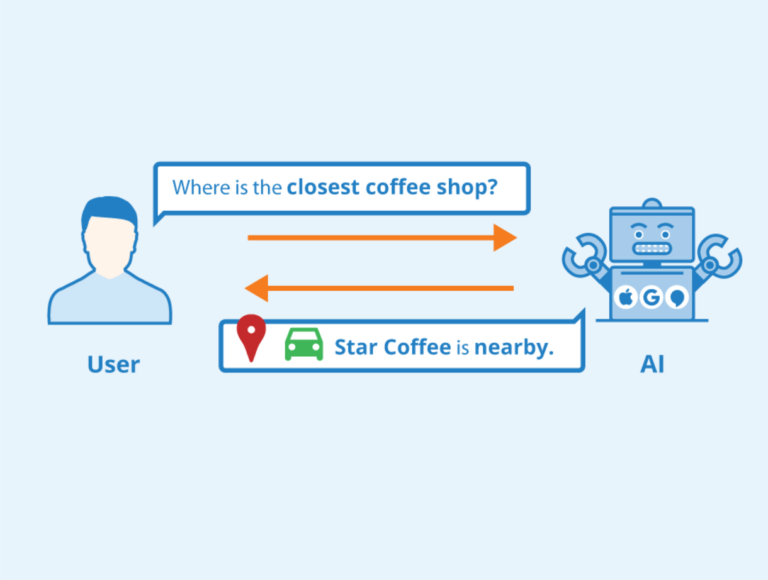Generative AI Applications for Business

Generative AI applications for business refer to any use of artificial intelligence to quickly and efficiently generate data or content that can improve productivity or profit.
Generative AI works by using a neural network to identify patterns from the large sets of data it is initially fed. And then, using those identified patterns to generate new content.
You will find a range of generative AI models and tools out there, with many more still under development. This post looks at all the ways you can put them to work for your business.
Benefits of Generative AI for Business
Business is all about profit and the best way to achieve that is by boosting your organization’s productivity and efficiency. Generative AI tools can help in many ways in this regard, and here is a quick look at their many potential benefits for your business.
- Creative Innovation: Generative AI is amazing at generating ideas, conducting research, and producing amazing works of art. The creativity of generative AI is one of its major benefits.
- Speed: Generative AI tools beat humans in speed when it comes to the time taken to produce a given work. This is another major benefit.
- Automation: You can easily use generative AI tools to automate jobs that you would otherwise need assistants for. From writing drafts to paintings, simulations, and even generating random data.
- Reduced Overhead & Cost Savings: Most generative AI services are cloud-based, so you neither need to pay for office space nor a salary.
- Productivity & Efficiency Improvement: With more creativity at faster speeds and lower costs, your business will improve. Higher productivity refers to more total business output, while efficiency refers to the same higher output with equal or lesser inputs.
- Better Personalization & Enhanced Customer Experience: Generative AI tools can help your business to personalize lots of stuff on the fly. This can lead to a better customer experience everywhere from marketing to sales and support.
Generative AI Applications
Many business sectors can benefit from the application of generative AI in one form or the other. The possibilities are vast, so it’s left for the company to find what works. Following are some of these possibilities.
- Content Generation: Generative AI applications are available for producing text content like blogs, essays, poems, and so on. Then, there are image and video generators, as well as music and speech. These generators usually take a text prompt as input to produce the output, but the technology can vary, of course.
- Image & Video Editing: Generative AI can also be applied to automatically edit pictures, videos, and audio data. For instance, you could transfer the style from one image to another. You could also remove a single object, change a background, upscale low-quality videos and audio, reduce noise and improve image quality, add visual effects, and do lots of other manipulations.
- Design & Creatives: Design and creative agencies can equally benefit from generative AI by using it to brainstorm ideas, develop initial concepts and mockups, create custom fonts and styles, generate color palettes, and more.
- Finance: Generative AI can be employed to detect fraud in financial transactions by first analyzing lots of historical data and then fishing out anomalies from real-time data. It can also help in service personalization and risk management.
- Education: Personalized education is achievable with generative AI that can organize courses and lesson plans based on a student’s learning styles, intelligence level, knowledge gaps, and other issues. It can further help to generate more interactive exercises that boost learning.
- Virtual Assistant: While super AI apps are yet to debut, others like ChatGPT are already replacing assistants for research, reading emails, summarizing text, drafting letters, and much more.
- Language Translations: Large language models like GPT-3 and co. can beautifully translate meaning from one language to another. Transformer models are great for language applications.
- Virtual Reality: Companies can employ generative AI to create virtual spaces with ease. This can be helpful for both gaming and other forms of entertainment.
- Games: From generating game gaming environments to maps, levels, and even non-player characters, the applications of generative AI in game development are immense.
- Coding & App Dev: Copilots for developers like the GitHub Copilot now make it easy to generate entire functions from a simple text description, auto-complete code intelligently, and translate computer applications from one programming language to another.
- Restoration & recreation: Generative AI features like image in-painting and out-painting can help in restoring or recreating images and artwork.
- Research & Development: Companies can accelerate drug discovery and create new products, materials, and chemicals faster by using generative AI for simulation & optimization.
- Legal Matters: Generative AI can answer complex questions relating to customers or clients. It can help with legal documentation, the drafting and reviewing of annual reports, and so on.
- Data Analytics: From anomaly detection to generating synthetic data for training machine models, generative AI also has its uses in data analytics.
- Human Resources: Companies can use generative AI to find the right candidate for the job by including more detailed information and search criteria about the job or candidate.
- Marketing & Sales: Generative AI makes it easy to create different assistants aligned to specific businesses, such as retail, marketing, and personalized service delivery from virtual assistants to chatbots and customer support.
- Fashion: From style recommendations to shoppers to personalized communications based on customer profile and interaction data, generative AI can also aid designers in creating new styles, turning sketches into final products, and producing virtual try-on simulations.
Adapting Your Business To Generative AI
No two businesses are alike, so there can’t ever be a fixed process for every organization to follow. However, here is a rough guide to help you adapt your business to using generative AI tools.
Step 1: Identify Potential Use Cases
Your first step is to identify areas of your business operations where generative AI can bring value. Think content creation, personalization, design, automation, and so on.
Step 2: Define Objectives & Metrics
Next, you should define what you hope to achieve with your AI deployment and equally set measurable metrics to help you monitor your productivity increase, labor and cost savings, or anything else that matters.
Step 3: Develop or Acquire The AI Model
Now, you will either need to sign up for a service that offers exactly what your business needs or to take a more general AI model and train it to meet your needs. This step is entirely up to you based on your organization’s needs.
Step 4: Test & Integrate
After testing the generative AI tool to confirm that it is producing the desired results, you will now need to integrate it into your operations. You may also need to train your team or staff on how to make the most of it.
Step 5: Monitor & Iterate
Finally, set intervals to monitor the performance and determine if everything is working out well. Also, keep in mind that AI is a rapidly evolving industry, so you might need to make slight improvements from time to time.
The Risks & Limitations
Generative AI technology and its associated tools are not perfect. There are some risks involved in using these tools, as well as limitations that you have to be well aware of beforehand. Here are the most important ones.
- AI Can Lie: ChatGPT is good at making up stories – such as excuses, why you can’t make it to a meeting, and so on. It can also hallucinate information like quoting non-existent articles and even court courses to make its point. So, you always need to inspect every output as a human.
- Systemic Biases: Models like GPT-3 and GPT-4 are fine-tuned by human reviews to include biases and this can lead to unexpected results if you have not trained the model by yourself.
- Company Individuation: Most models are trained broadly, so unless you further train or fine-tune them, they will be unable to adapt entirely to your company’s culture and business values.
- Intellectual Property Questions: Many artificial intelligence models are trained on publicly available data, which were created by people. Some lawyers are already trying to sue AI companies for intellectual property theft. So, no one knows what the future holds in this regard.
Frequently Asked Questions
Here are some frequently asked questions regarding generative AI applications and business.
What is generative AI?
Generative AI is a type of artificial intelligence that can create stuff, such as text, blogs, images, videos, animations, and even music by itself. It learns how to recreate stuff by studying lots and lots of examples in a process called training.
How does generative AI work?
Generative AIs work by using machine learning methods depending on the project’s goals. They are usually neural networks and can be a Generative Adversarial Network (GAN), Variational Autoencoder (VAE), Generative Pre-trained Transformer (GPT), and Convolutional Neuro Networks (CNN) with a generative feature.
Will AI take over all businesses?
Yes, and No. Yes because it will eventually be employed in most business ventures down the line. But No because AI is not sentient (at least, not yet). So, humans will always be needed in supervisory roles.
Can I fine-tune a generative AI model for a specific task or market?
Yes, you can. GPT-3 for instance, is a broad model that has been trained on general intelligence. OpenAI then fine-tuned it to become the chat and virtual assistant application ChatGPT. As a developer, you can fine-tune OpenAI’s GPT-3 Davinci, curie, babbage, and ada models.
What are some popular generative AI models?
There are a few popular generative AI models and they include OpenAI’s GPT-3, GPT-4, and ChatGPT, Google Bard based on the LaMDA model, AlphaCode, GitHub Copilot, Dalle-E 2, and Stable Diffusion.
Conclusion
Generative AI is opening new avenues for businesses around the world. By making it faster, cheaper, and easier to generate new ideas and functionality, generative AI is helping businesses that embrace it to stay ahead of the curve in this rapidly evolving digital age.
Has your business embraced generative AI?





